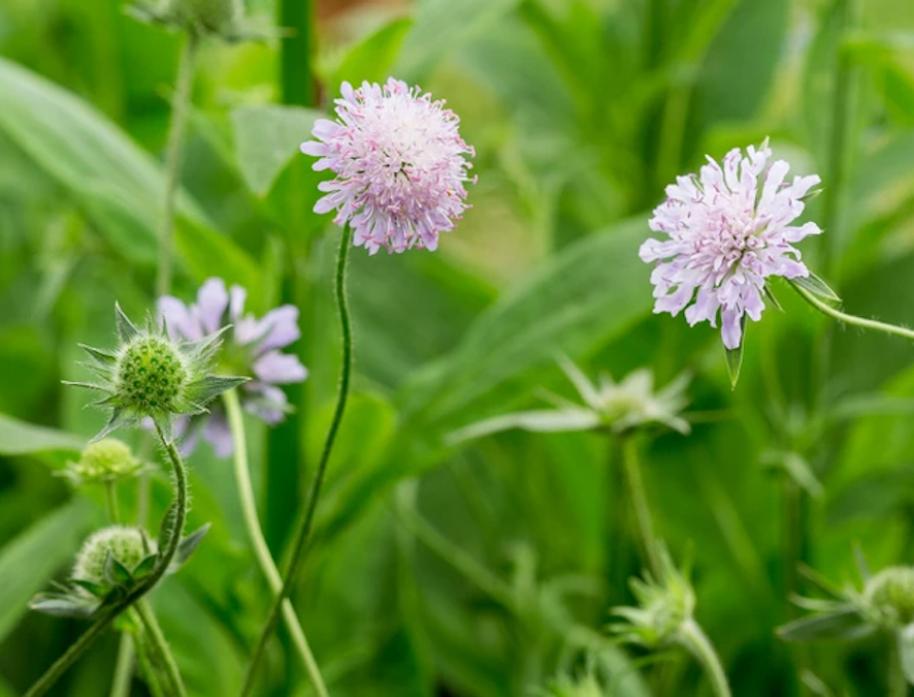
Field Scabious (Knautia arvensis) Blue Bonnets, Lady’s Pincushion
ONE of the interesting things about plants in and around Barnard Castle is what they can tell us about the past.
For example, on the Lower Demesnes you can find common spotted orchids, betony and harebells, while on the river bank there is restharrow, butterbur, globeflower and scabious.
These patches of flora suggest that in the past these were much more varied habitats, and, sadly, as in so many places, what we see now is only a hint of an earlier richness.
Field scabious is a tall, perennial plant with a carrot-like tap root.
It is found in dry grassy fields and dry pastures, and on banks, and has been documented up to 400 metres altitude in Derbyshire. It is less common in the north of England, and absent from the Scottish islands.
In winter, only a basal rosette of leaves marks its presence, but in spring growth, the stem can reach up to a metre high, with downwardly turned bristles that give it a rough texture.
Flowering time is from July onwards, but I have spotted stragglers on the river bank in Barnard Castle as late as November.
During the summer the flowers are visited by bees and butterflies. The flowers are actually inflorescences – lots of very pretty blueish-lilac flowers gathered into a head three to four centimetres in diameter, with the outside flowers being larger than those in the centre of the head and colloquially known as Lady’s Pincushion or Blue Bonnets.
Although mainly blue, the flowers can vary from pink, through lavender to as dark as purple. On ripening, the heads turn brown and are filled with tiny, very hairy seeds.
Scabious is not a pleasant name, evoking the idea that it might cause scabs and, worse, scabies.
But in actual fact the plant is named for quite the contrary reason. Culpeper’s Herbal says that “a decoction of the roots wonderfully helps (cure) running or spreading scabs or ringworm even though they proceed from venereal disease”.
Culpeper also says that “the herb, bruised, draws forth splinters, broken bone and arrowheads...lying in the flesh.” Once again in these columns, considering a visit to the surgery first is recommended.
Richard Warren is a botanist living in Barnard Castle





